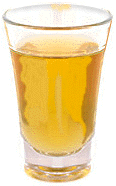...Best of Sicily presents... Best of Sicily Magazine. ... Dedicated to Sicilian art, culture, history, people, places and all things Sicilian. |
by Roberta Gangi | ||
Magazine Index Best of Sicily Arts & Culture Fashion Food & Wine History & Society About Us Travel Faqs Contact Map of Sicily |
Owing to its seeming similarity to the word almond (in Italian mandorla), amaretto is often taken to literally mean "almond liqueur." It is, but the connection to the word "bitter" comes to us from the original fruit, the almond nut, being bitter. This reminds us that the Sicilian almond comes in two basic varieties, sweet and bitter; some are more edible than others. As if this were not misleading enough, modern amaretto is not always made entirely from almonds, but from the pits of peaches or, most often, apricots. You didn't know that? Well, truth is that many almond-flavoured products, including soaps and perfumes, derive their scent from the humble apricot pit. Peach and apricot trees are closely related to the almond tree. The real difference, as far as people are concerned, is the part of the fruit which is consumed. Hardly anybody finds the idea of eating apricot pits very appealing, but in the case of almonds it's the pit, not the flesh or husk (skin), that we eat. In principle, a true liqueur is based on a liquid distilled directly from a fruit, berry or nut to which sugar is added (when necessary) to obtained a desired level of sweetness. Today, however, it's often the case that alcohol is simply flavoured with an extract. In other words, most of what you're drinking is grain alcohol with flavour and amber colouring added. Don't dispair; even vodka is usually made from grain alcohol instead of potatoes --which is what it was originally distilled from. Although amaretto seems to have been invented in Sicily late in the Middle Ages, several firms in northern Italy have been producing their own versions of it since the sixteenth century, and each has its own history --or legend-- explaining the liqueur's creation and popularity. Some of these stories doubtless contain at least a grain of truth to go with the grain alcohol in the firms' amarettos. Then there are the various kinds of cookies known as amaretti, which in Sicily do indeed contain almonds rather than apricot kernels. This talk of substituting apricot pits for almonds has an unappealing ring to it, as if an impostor were taking the place of the real thing. The almond is a noble fruit, mentioned in the Bible and cultivated in Sicily since the most ancient times. The apricot is, well, just an apricot, a poor ignoble (if tasty) cousin of the almond. The almond has an assured place in our cuisine. Who wants to munch on smoked, salted apricot pits? A little amaretto goes a long way when added to a cup of coffee, and several cocktails call for amaretto, most notably the rare mendola (the surname means "almond tree"), a variation of the martini made with vodka, vermouth and a spritz of amaretto. About the Author: Roberta Gangi has written numerous articles and one book dealing with Italian cultural and culinary history, and a number of food and wine articles for Best of Sicily Magazine. | |
Top of Page |
 What's in a name? When it comes to liquors,
names can be deceptive. Vodka is not water, though its name is a corruption of the Russian word for water. And amaretto is not
bitter, even though its name derives from the term amaro, literally "bitter." More precisely, amaretto is sweet, and
its very name most closely means "a little bitter." Then there are the Italian liqueurs known
as amari, literally "bitters," which really are bitter! So let's end the confusion.
What's in a name? When it comes to liquors,
names can be deceptive. Vodka is not water, though its name is a corruption of the Russian word for water. And amaretto is not
bitter, even though its name derives from the term amaro, literally "bitter." More precisely, amaretto is sweet, and
its very name most closely means "a little bitter." Then there are the Italian liqueurs known
as amari, literally "bitters," which really are bitter! So let's end the confusion.